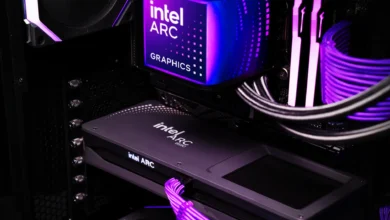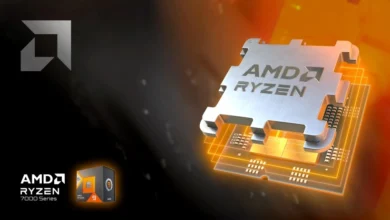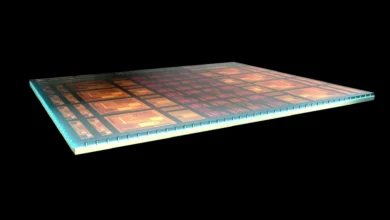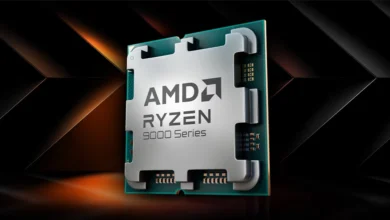Intel Proposes 64-Bit Only CPU, Names It x86S

With the 64-bit only CPU proposal, Intel says that it will lead to faster CPUs by removal of legacy functions which are not in use anymore.
Almost 3 decades ago, Intel and HP started working on a 64-bit micro-architecture for the Intel CPUs. After years of work, Intel finally announced IA-64, which was a 64-bit CPU architecture. The first CPU to launch in with this architecture was Intel Itanium (Merced) processor.
Standing far away, looking at what Intel was doing, was AMD. Intel and HP never invited AMD to contribute to the production of this new architecture and there weren’t any chances of Intel licensing it to AMD either.
So AMD decided to create its own architecture. It was named AMD64, which sometimes is also called x86-64. It’s an 64-bit instruction set extension to the original x86 architecture.
What AMD did with it’s AMD64 was that it created a 64-bit CPU architecture which supported backwards compatibility with x86 32-bit architecture. Something that Intel’s IA-64 didn’t have.
To put it in simple words. Intel’s 64-bit implementation didn’t fully support 32-bit. Whereas AMD’s 64-bit implementation did. The first CPU with the AMD64 support was AMD Opteron processor.
So good was AMD’s implementation that Intel had no option but to later buy a license from AMD to implement that in Intel’s own processors. So what is happening from years is that Intel licenses x86 to AMD and in return AMD licenses x86_64 to Intel. All the Intel and AMD processors made since then support these architectures, allowing 64-bit computing with 32-bit support.
Since then, we haven’t seen that many major changes to the x86 architecture. But that could soon change if Intel’s new proposal goes through.
Intel’s New x86S Proposal
In a blog post, Intel has proposed a new 64-bit mode only CPU architecture, which it has named x86S. Intel says that S here stands for simplified. There are many reasons it has given for the proposal. It has explained those reasons in detail in a PDF whitepaper.
First, Intel CPUs contain a lot of legacy functions going back decades, which are so outdated that they are not in use now. So doing away with them gives more space on the CPU to add other useful things. It could allow adding new instruction sets, which could help improve the speed of CPUs further.

Second, from the looks of it, whenever a computer boots, it runs the function in a 16-bit mode, then converts that into 32-bit. Then this 32-bit gets converted further into 64-bit mode. After which, these 16-bit and 32-bit instructions are not used anymore. So removal of 16-bit and 32-bit means the computer will boot in 64-bit mode directly, possibly improving the boot speed significantly.
Software Support For 32-Bit
Intel mentions that it’s been more than two decades since mainstream x64 operating systems are available. Then, it’s been more than a decade since 64-bit UEFI BIOS became a standard.
Not only the operating systems or UEFI BIOS, even users have changed. As 32-bit is technically limited to just 4GB RAM, most people have switched to a 64-bit OS and run 64-bit software on it. Some operating systems don’t even come in 32-bit mode anymore.
But what about 32-bit OS and software which are still required. No need to worry about them. Intel says you can still run them by emulation. Quoting the Intel page:
While running a legacy 64-bit operating system on top of a 64-bit mode-only architecture CPU is not an explicit goal of this effort, the Intel architecture software ecosystem has sufficiently matured with virtualization products so that a virtualization-based software solution could use virtualization hardware (VMX) to deliver a solution to emulate features required to boot legacy operating systems.
Honestly, common people don’t need to worry too much about 32-bit software these days. To understand that, one needs to do a simple thing. Run Task Manager > Click on More Details > Scroll and see how many software have 32-bit written next to them. One would find that at least 60% of the software they use are 64-bit. The ones which are still in 32-bit can be easily made available in 64-bit if the developer intends it.
Even then, if 32-bit software are emulated, they will run, only they will be not run natively, hence they will run slightly slower. But that slowness can be countered with even faster CPU speed which new CPU architecture can offer.
Licensing & Conclusion
For now, we don’t know what’s AMD’s views are on this. We don’t know if this proposal goes ahead, then whether AMD will get a license for it. It’s unlikely to be a problem for AMD to get the license, though. They own the license for the 64-bit instruction set which Intel and AMD implement in their processors. However, it would be interesting to hear from AMD about what they think about this proposal.
As for the proposal itself. It’s for now, it’s what it is, a proposal. Intel has invited the whole ecosystem to evaluate this proposal and send them feedback about what they think about this move.
From our view, a lot has changed since 64-bit was introduced. It supports RAM above 4GB and has a lot of other benefits too. Additionally, not only operating systems and software, even games these days come with 64-bit mode. Some games exclusively run in 64-bit mode, with no support for 32-bit process. So moving towards a 64-bit architecture should be welcomed.
It also depends on how well all the 32-bit software emulate on a 64-bit only CPU, though. Whether they run directly or then run only inside a virtualized environment where extensive user effort is required, that’s going to be a big difference. If they run normally, just like how they do currently on a 64-bit OS, then it’s a non-issue completely.
Either-way, even if this proposal does go ahead as suggested, it’s unlikely to be implemented soon. It can take years, if not a decade, for both Intel and AMD to come out with a 64-bit only CPU. By then, a lot of changes would have happened at software and even hardware level too.




